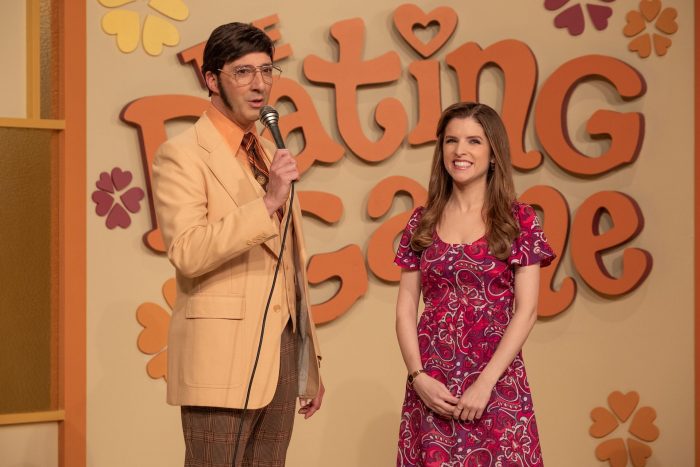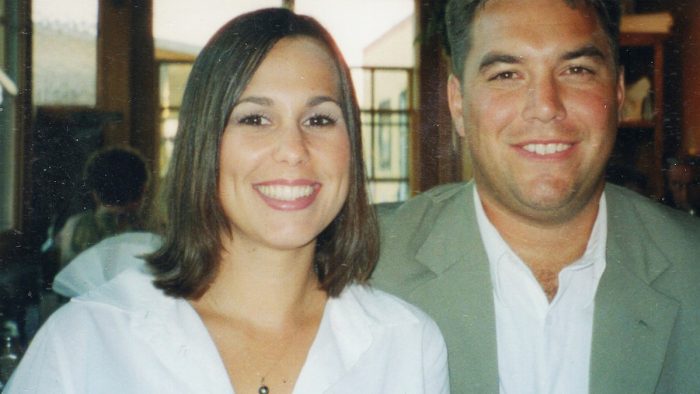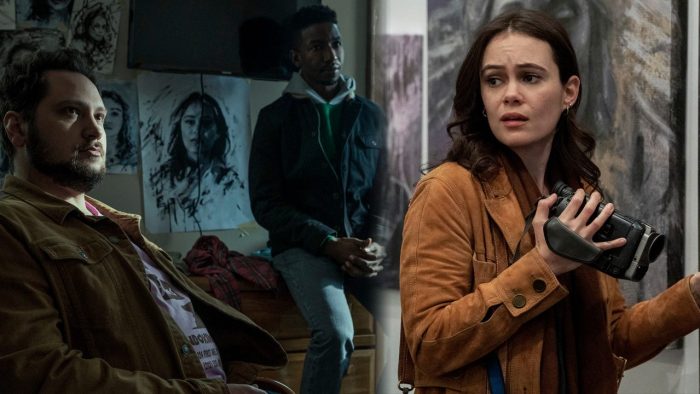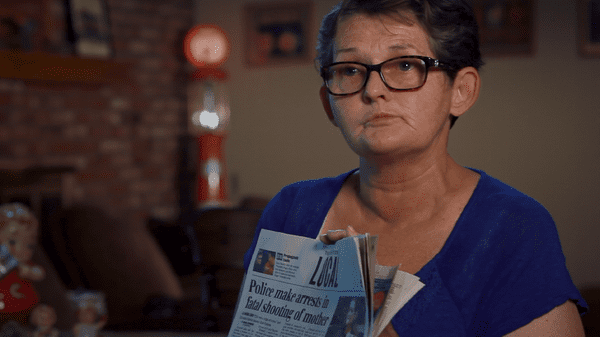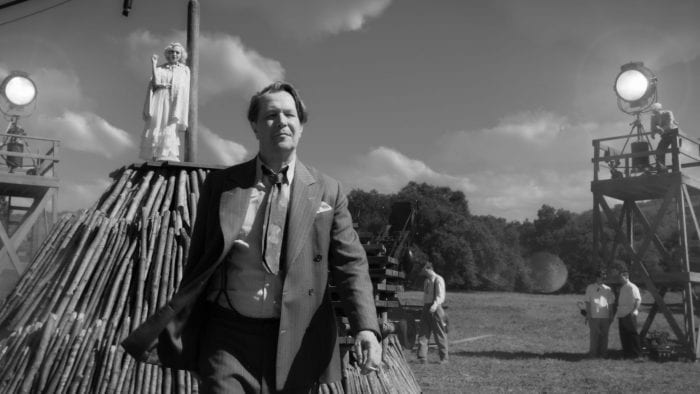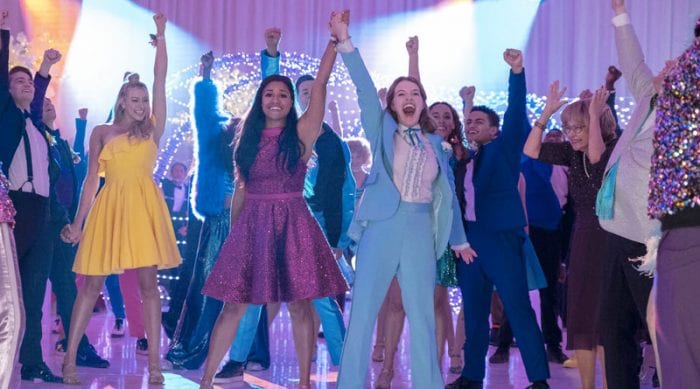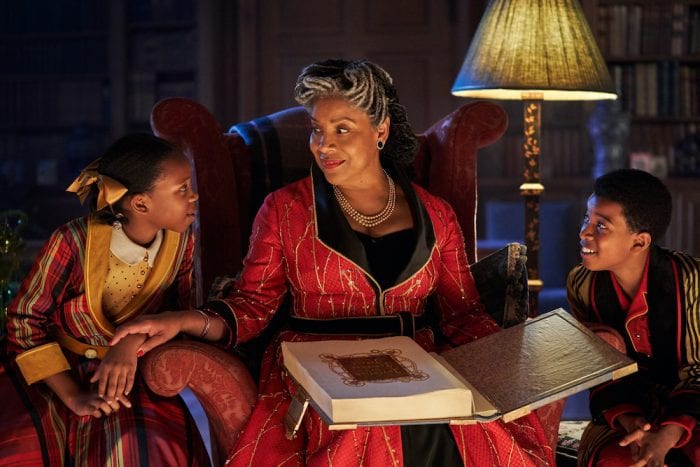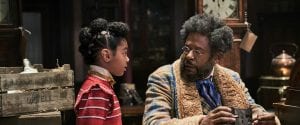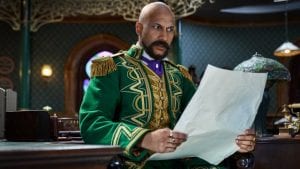Reviewed by Jeffrey Sanzel
At Enoteca Maria we celebrate cultural diversity by serving cuisines from around the world, but we do it in the most uniquely authentic way possible. Real grandmothers from every country across the globe are invited and hired as chefs to cook the recipes handed down to them that they cook at home for their families, that make up the fabric of the culture they were born and raised in. We aspire to build cultural connections through the universal language of cooking […].
Culture is a resource worth preserving. After all a tree can’t grow and change without its roots.
— from the Enoteca Maria website
In Nonnas, Netflix offers a highly fictionalized but loving celebration of Joe Scravella’s Staten Island restaurant, Enoteca Maria. Novelist-turned filmmaker Stephen Chboksy leaves his edge behind in directing Liz Maccie’s by-the-numbers screenplay and presents a heartfelt but wholly predictable salute to family and food.
The film opens with young Joe (Theodore Helm) and a Sunday dinner in Brooklyn, watching his mother and grandmother in the kitchen, while the extended clan eats, sings, and dances in the living room. Observing his grandmother add ingredients to the sauce pot, the boy asks, “How do you know how much to use?” His grandmother responds: “You feel it in your heart. You put in your heart.” The rest of Nonnas’ two hours fall along the same line in simplicity and intent.
The story fast forwards several decades. The grown Joe (Vince Vaughn) has lost his mother to cancer. Saddened and more than a little broken, he stares into the emptiness stretching before him. After some emotional struggle, he uses the two hundred thousand dollars inherited from his mother’s insurance policy to open a restaurant to honor her memory. His concept is simple: he will hire “nonnas” (Italian grandmothers) as chefs.
He first recruits his mother’s best friend, the irascible Roberta (Lorraine Bracco). He then runs an ad in Craig’s List, garnering a “retired” nun, Teresa (Talia Shire), and Antonella (Brenda Vaccaro), the neighbor of Joe’s high school prom date, Olivia (Linda Cardellini). His mother’s hairdresser, Gia (Susan Sarandon), rounds out the staff, serving as pastry chef. His childhood friend, Bruno, with a touch of strong-arming from Bruno’s wife, Stella (Drea de Matteo), reluctantly serves as contractor.
Nonnas follows this rag-tag crew as they benignly bicker and quickly join forces to open the restaurant. They face predictable challenges—code issues, building violations, a kitchen fire (from an incinerated sheep’s head used for Capuzzelle), opening in a thunderstorm to no business, a snobbish food critic (Campbell Scott), etc. The problem is that the hurdles feel artificial; therefore, nothing plays on two levels—whether grief or goals. No point is allowed to simmer; everything must come to an immediate boil, then taken off the stove. There is a brief food fight, a makeover montage, and a vague drinking scene with personal revelations, but no surprises.
The dialogue is a string of clichés and aphorisms: “The tomato is the heart of your dish. If you don’t have heart, you don’t have nothin’.” “You make the food. People eat the food. You make people happy.” “Food is love.” “Age is not a disease.” And, stated more than once, “One does not grow old at the table.”
Vince Vaughn is not plumbing any depths; his performance falls into his long line of likable everymen. But his wide-eyed charm and easy earnestness hold center. The same is true of the entire cast. The quartet of kitchen cooks play to type but are delightful as they do so. Cardellini’s widow is just the right romance-light that Joe—and the story—needs. Everyone seems to be in on the celebration and having a terrific time.
While Nonnas could easily be accused of overly sentimental (tipping occasionally into saccharine), its genuine sincerity comes through. The combination of food-porn-with-a-point and making the family you need synthesize in this Italian Valentine. Borrowing from another culture’s cuisine, Nonnas is pure schmaltz.
Enoteca Maria opened in 2007 and, unlike as portrayed in its cinematic counterpart, was an immediate success and continues to thrive. If Nonnas is not quite art, it cannot help being a boon for the restaurant and its mission.
Rated PG, the film is now streaming on Netflix.


